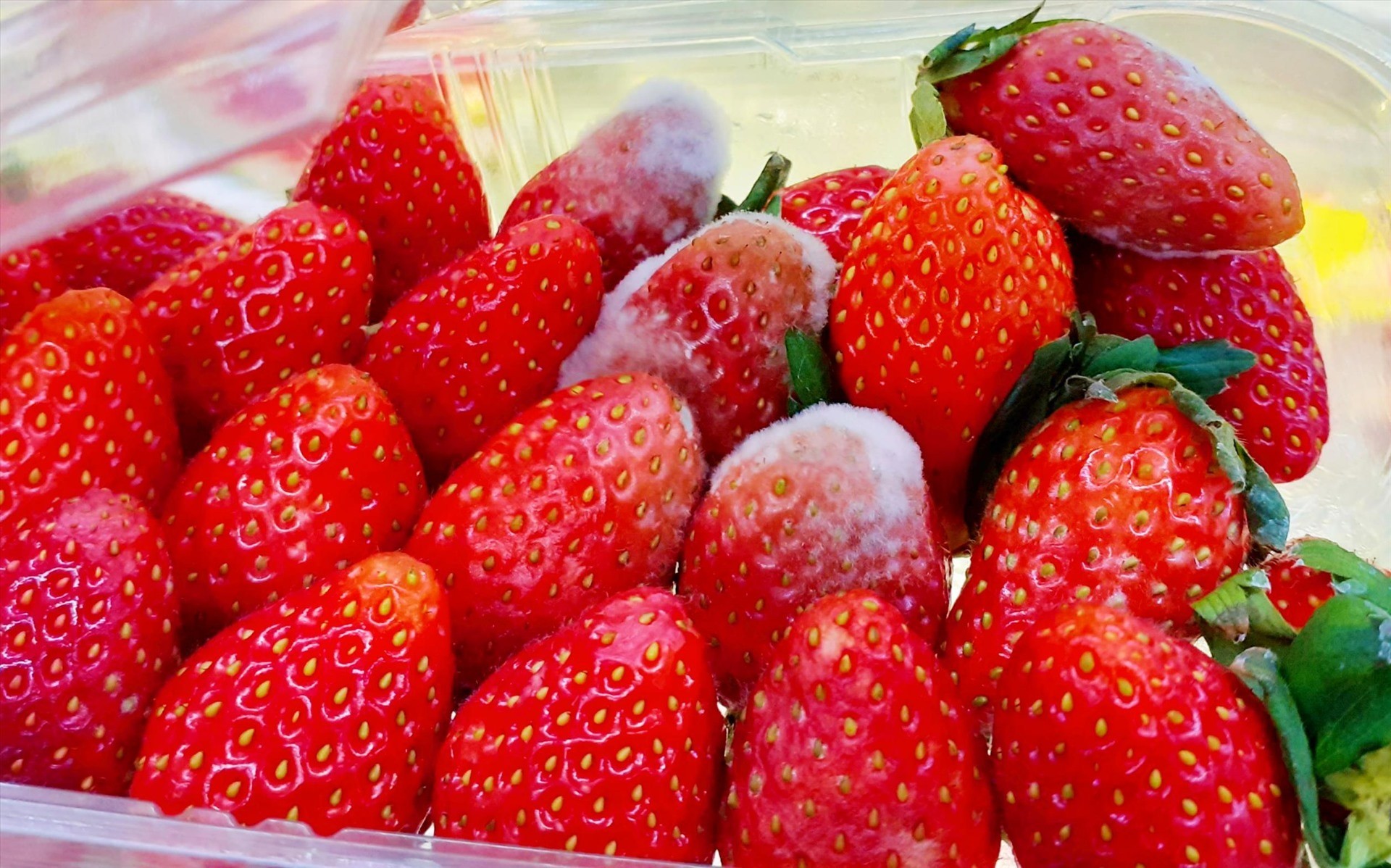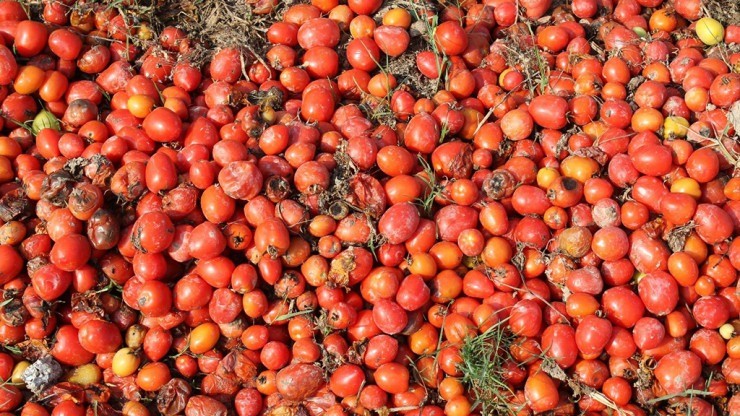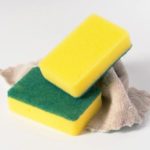Strawberries with Mold
When strawberries have mold, consuming them can pose a risk and harm to health. Mold is a type of microscopic fungus that can grow on food when environmental conditions such as temperature, humidity, and the presence of oxygen become favorable. Here are some of the risks and hazards of consuming moldy strawberries:
Toxicity from Mycotoxins: Some types of mold produce mycotoxins, potent toxins that can cause serious health issues. Consuming food containing mycotoxins can cause gastrointestinal problems, abdominal pain, and vomiting. In severe cases, mycotoxins can harm the liver and kidneys, and even cause cancer.

Absolutely do not eat moldy strawberries as it can cause poisoning. Image from the internet
Allergic Reaction: Some individuals may develop allergic reactions or sensitivities to mold. Consuming moldy strawberries can cause allergic symptoms such as sneezing, itchy eyes, or more serious reactions like difficulty breathing.
Infection and Illness: Some types of mold have the ability to cause infections, especially in cases of weakened immune systems. Illnesses resulting from consuming moldy food are not limited to the digestive system and can also affect other systems in the body.
Bad Taste and Odor: Moldy strawberries often have an unpleasant taste and odor. These taste and odor are clear signs that the food is no longer safe to consume.
The best way to avoid the health risks from moldy strawberries is to remove them from your diet. If you discover moldy strawberries, you should not cut off the moldy part and eat the remaining portion; the entire fruit should be discarded as mold fibers and mycotoxins may have spread throughout the fruit. Ensuring proper storage conditions for strawberries also helps reduce the risk of mold and prolong their shelf life.
Tomatoes with Black Spots
Moldy tomatoes can contain harmful mold spores and bacteria, including those capable of producing toxins such as aflatoxin, one of the most potent toxins produced by mold. This toxin can cause serious health issues, including liver damage.

Do not eat tomatoes with black spots as they may be infected. Image from the internet
Some types of mold produce mycotoxins, which are harmful compounds that can cause severe health reactions, including allergies, abdominal pain, nausea, and, in severe cases, organ damage or cancer.
When a part of a tomato is moldy, mold spores may have spread throughout the majority of the tomato, which may not be visually detectable. Removing the moldy part and consuming the remaining portion can still pose health risks.
For individuals with weakened immune systems, such as children, the elderly, or those with chronic illnesses, consuming moldy food can lead to serious health issues as their bodies may have a harder time fighting off infections.
Source: Người đưa tin






































